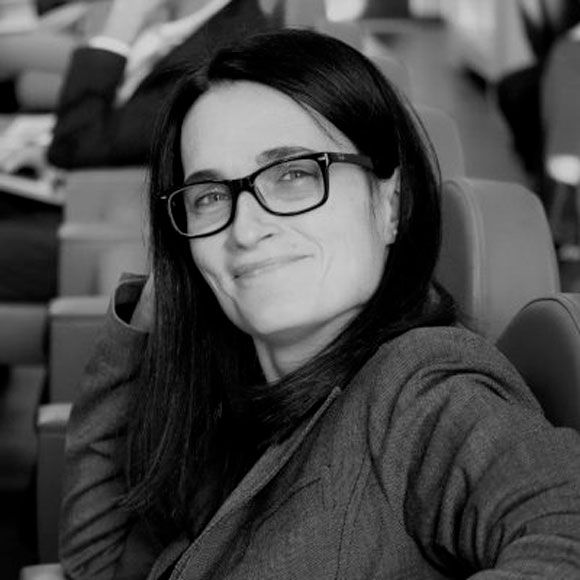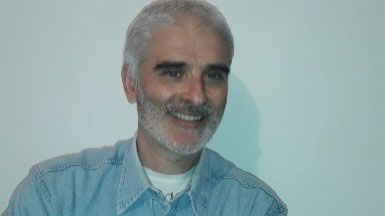Domestic Speakers Webinar Series
November 11, 2021
Silvia Pescina

University of Parma, Department of Food and Drug, ADDRes Lab, Parma (Italy)
EX VIVO MODELS FOR OPHTHALMIC DELIVERY
Abstract
In recent years, the unmet clinical needs in ophthalmology have boosted the research in the field of ophthalmic delivery. Thus, the development of formulations allowing for minimally and less invasive approaches, amongst all the nanosystems, led to important results, even already implemented as marketed products.
Complete in-depth knowledge of all ophthalmic formulations is reached by integrating the in vitro methods with the ex vivo animal models. Particularly, the use of ex vivo models based on animal ocular tissues for permeation and retention studies is essential for the comprehension of formulation behaviour and consequently for their evaluation and optimization. Ex vivo ocular models can be either simple, like a single isolated membrane, such as cornea, sclera, choroid, or very complex, like a whole eye. Despite the level of complexity, the set-up and validation of such models represents a very important aspect of the research activity in the field of ophthalmic delivery, considering that reliability and reproducibility are the two principle mandatory requirements.
Therefore, the webinar will be focused on the development, validation, and application of ex vivo ocular models for drug delivery studies.

About Silvia
Silvia Pescina graduated in Pharmaceutical Chemistry and Technology in 2008 at the Faculty of Pharmacy of the University of Parma and defended her PhD in Biopharmaceutics-Pharmacokinetics in 2012. During the PhD, she spent some months as visiting PhD student at the Centre for Drug Research, University of Helsinki (Finland).
From 2012 to 2014 she was Postdoctoral Fellow at the Interdept. Centre Biopharmanet_TEC, University of Parma, and from 2014 to 2019, at the Department of Pharmacy, University of Parma. Currently, she is Assistant Professor at the Food and Drug Department, University of Parma. From October 2019 she is Docent in Drug Delivery at University of Helsinki (Finland). Silvia Pescina is author/co-author of 40 papers published in international peer-reviewed journals.
Research activity is mostly focused on ocular drug delivery, with emphasis on development and characterization of topical dosage forms, on set-up of in vitro and ex vivo models, mainly based on porcine tissues, for studying the ophthalmic delivery of conventional and biotech compounds, and on the evaluation of chemical and physical absorption enhancers.
Mario Grassi

Department of Engineering and Architecture, Trieste University, Trieste, Italy
AN HISTORICAL PERSPECTIVE OF DRUG DELIVERY AND MATHEMATICAL MODELING
Abstract
It is probably not well known that in 4000 BC Sumerians were able to prepare many medicaments and that the same was used to do Assyrians, Babylonians and Egyptians 3000 years BC. Interestingly, the idea that illness is a sort of divine punishment and healing is the consequent purification was born in that time and this view heavily affected the western world up to the modern age. If Hippocrates and Galenus started detaching from this viewpoint, the scientific darkness permeating Europe after the end of the Roman Empire reaffirmed this way of conceiving illness. Only in the 9th -13th centuries, thanks to the golden age of Arab Science, something changed this establishing the basis for Renaissance. Interestingly, in the first half of the 16th century, Paracelsus conceived the human body as a chemical laboratory. However, only at the end of the 19th century, thanks to Galilei’s approach, the real origins of many diseases were discovered. Since then, drug delivery has developed and the realization of the first controlled release system dates back to 1952 while the first example of mathematical modelling followed 9 years later. The clear affirmation of mathematical modelling in the biopharmaceutical field took place in the last twenty years of the 20th century. The third millennium opens with a new important challenge for mathematical modelling: combining in a single model drug release and in vivo drug adsorption, distribution and elimination.

About Mario
Mario Grassi is full professor of Chemical Engineering at the Department of Engineering and Architecture of the Trieste University. He got his Ph.D. degree in Chemical Engineering at the Padova University (Italy) on December 13rd 1996. He has worked for Vectorpharma and EURAND in the field of the bioavailability increase of poorly water solubel drugs. He is author/co-author of 180 papers published on international journals, 165 abstracts presented in national and international Symposia, 12 book chapters and one book.
His research field is about:
- modeling of drug release from delivery systems and drug absorption by living tissues,
- characterization (rheology/Low field NMR/release tests) of polymer based delivery systems
- bioavailability increase by means of nano-crystals and amorphous state
- characterization, by means of Low Field NMR, of the sputum of patients affected by chronic obstructive pulmonary diseases.